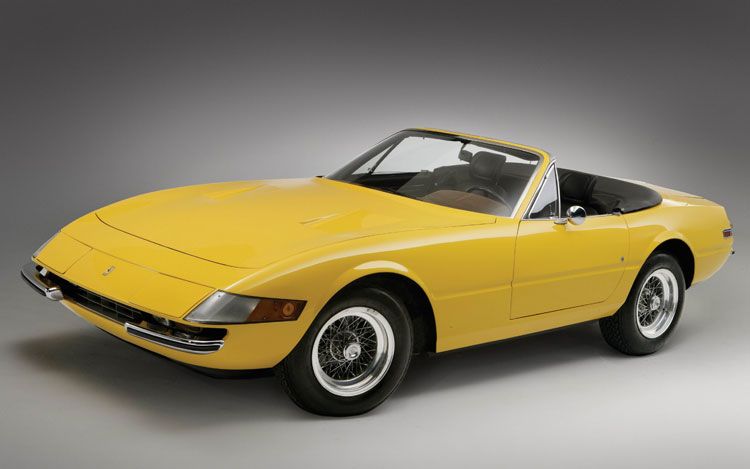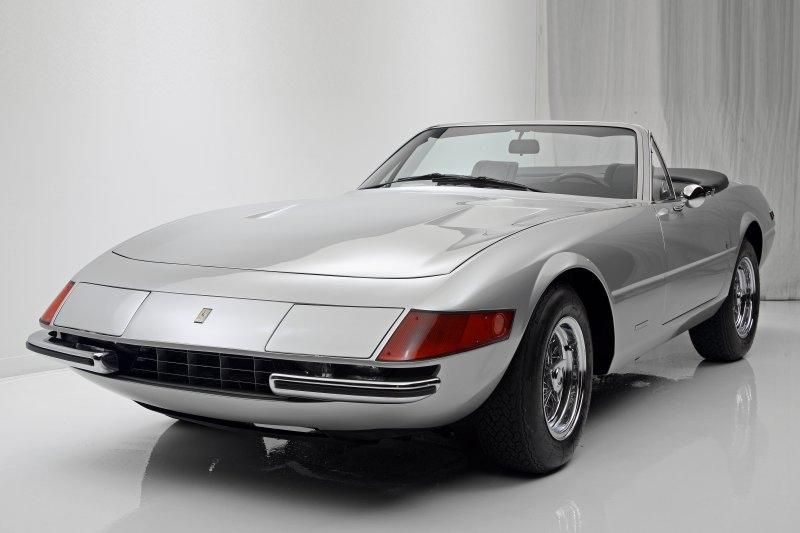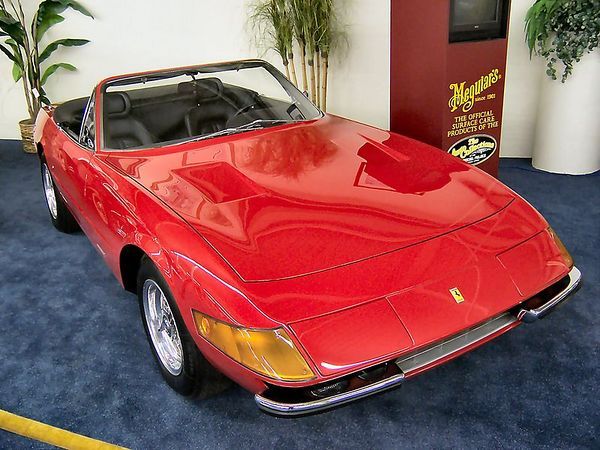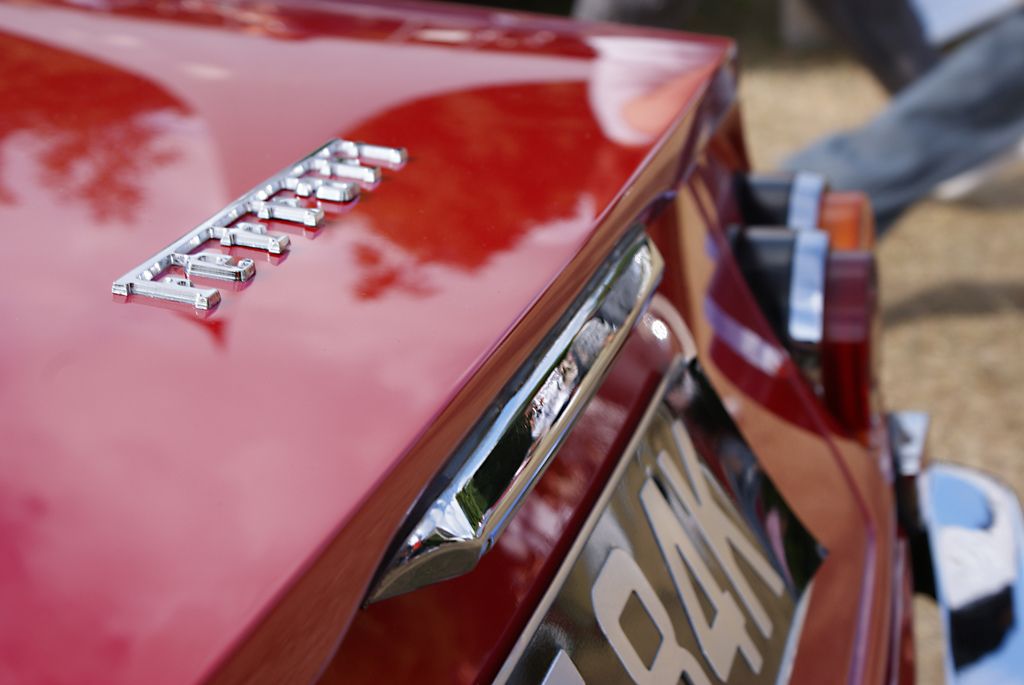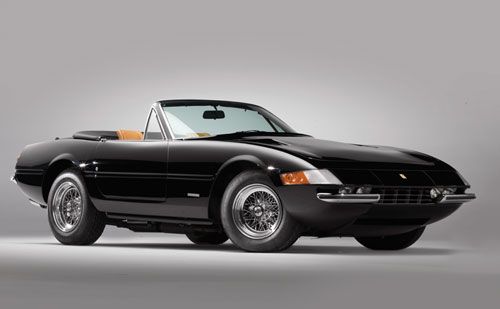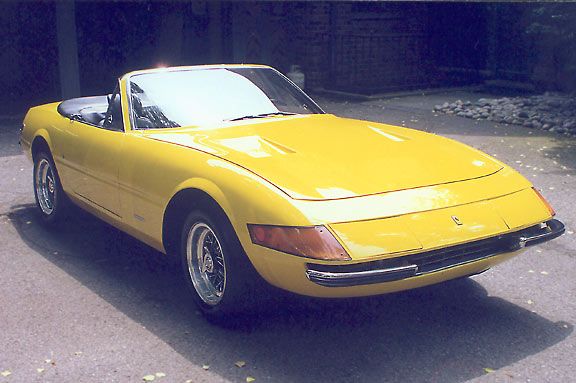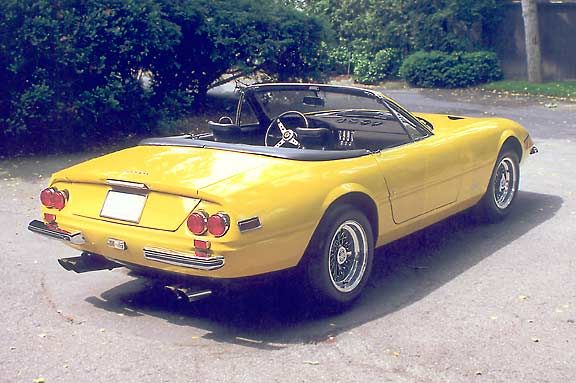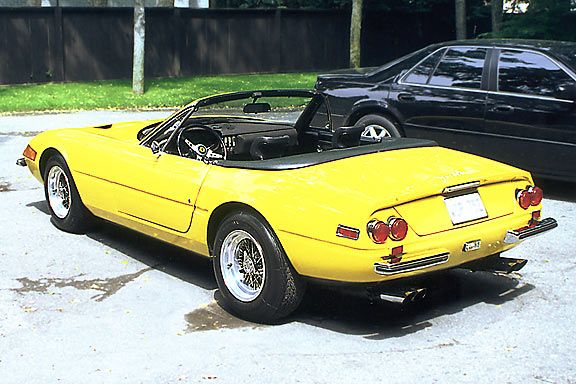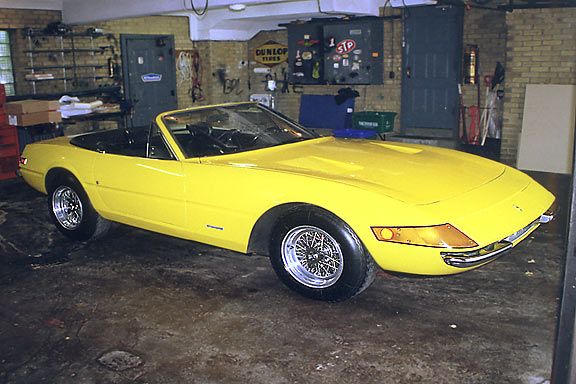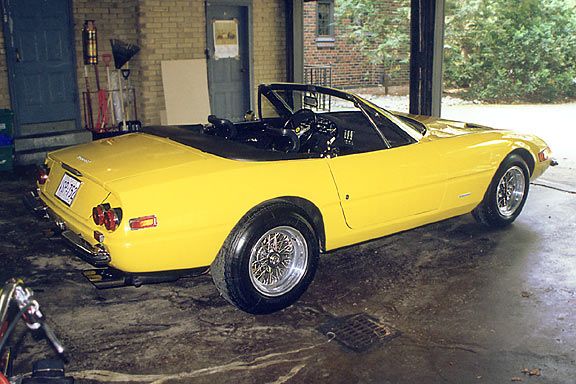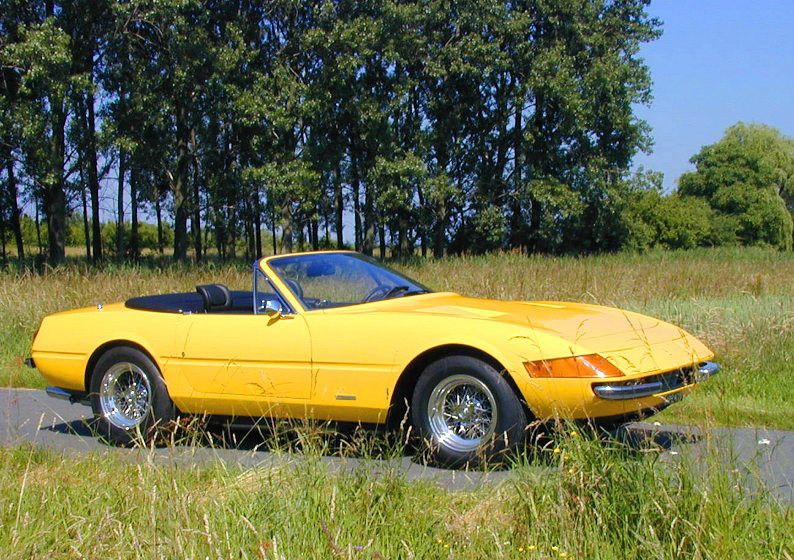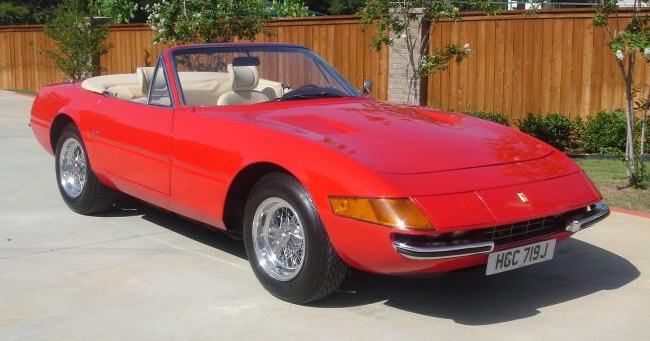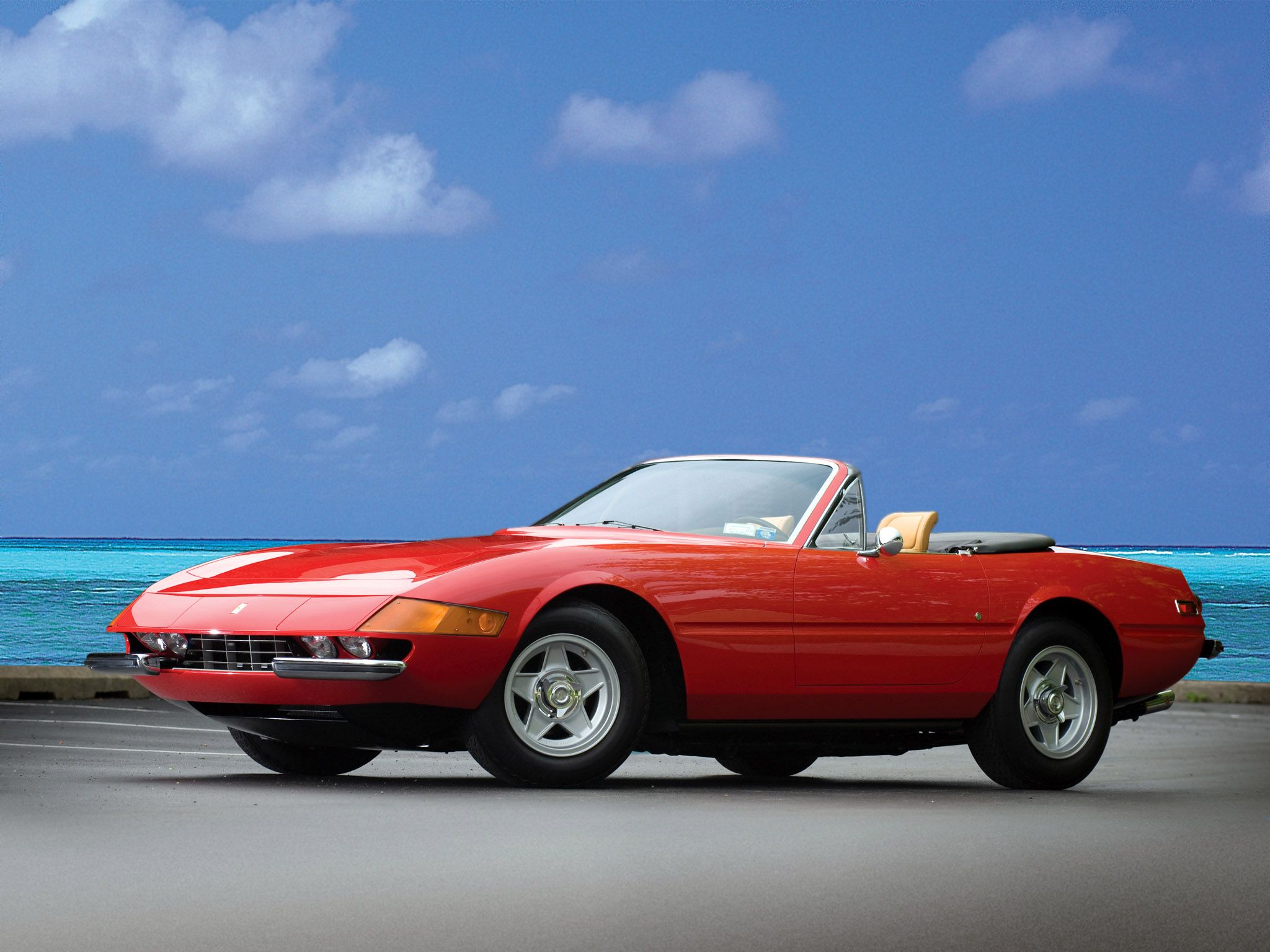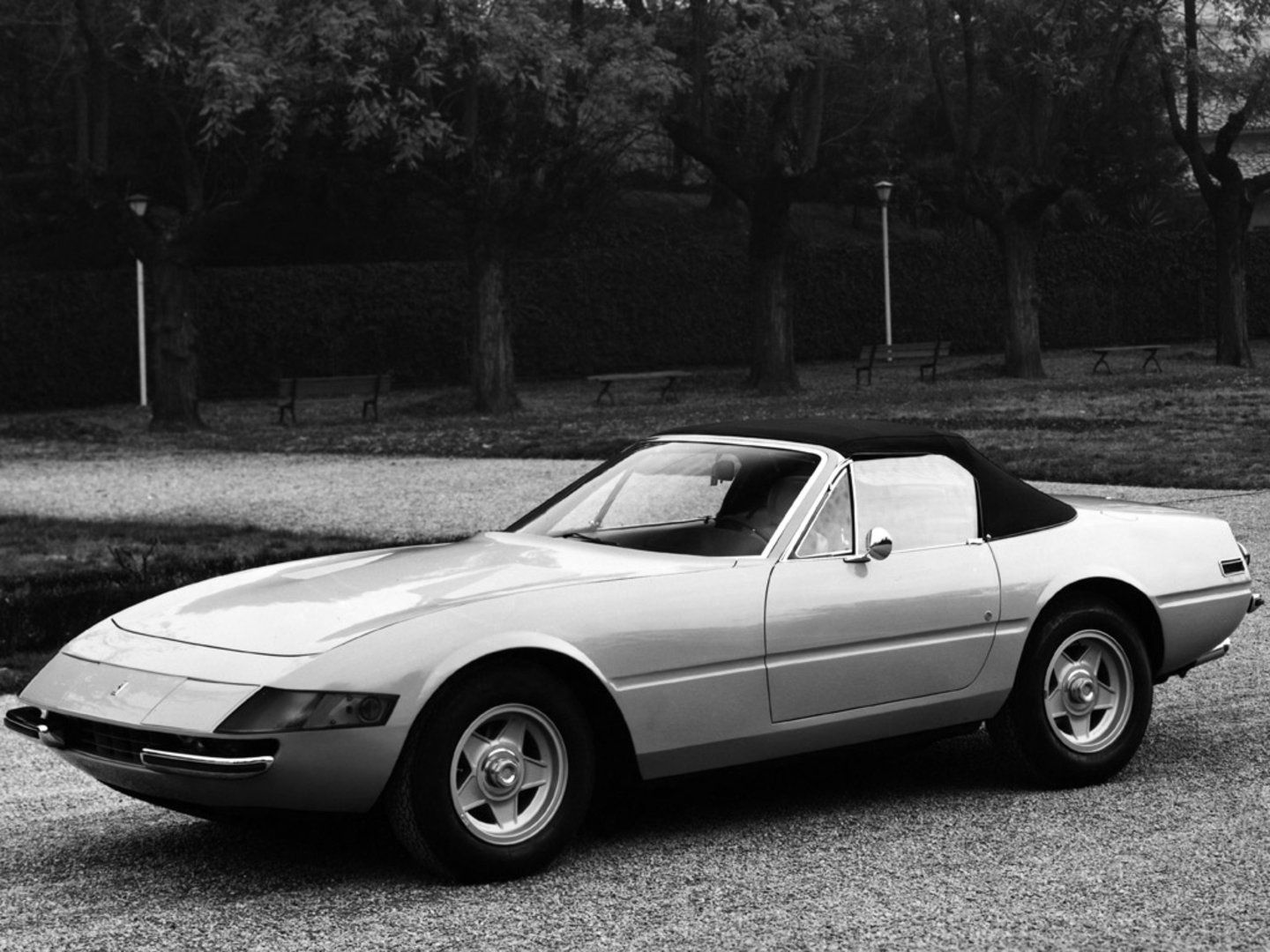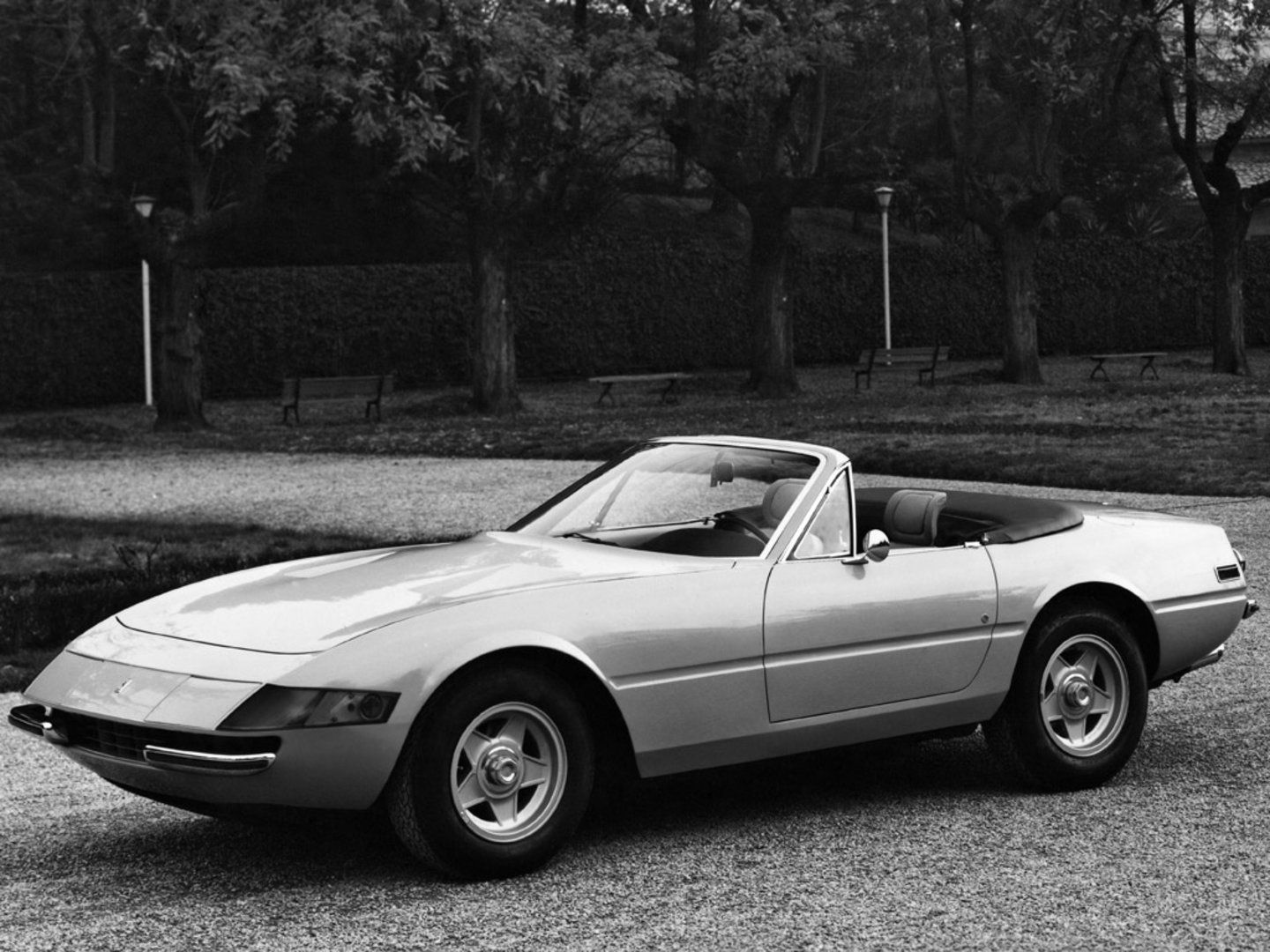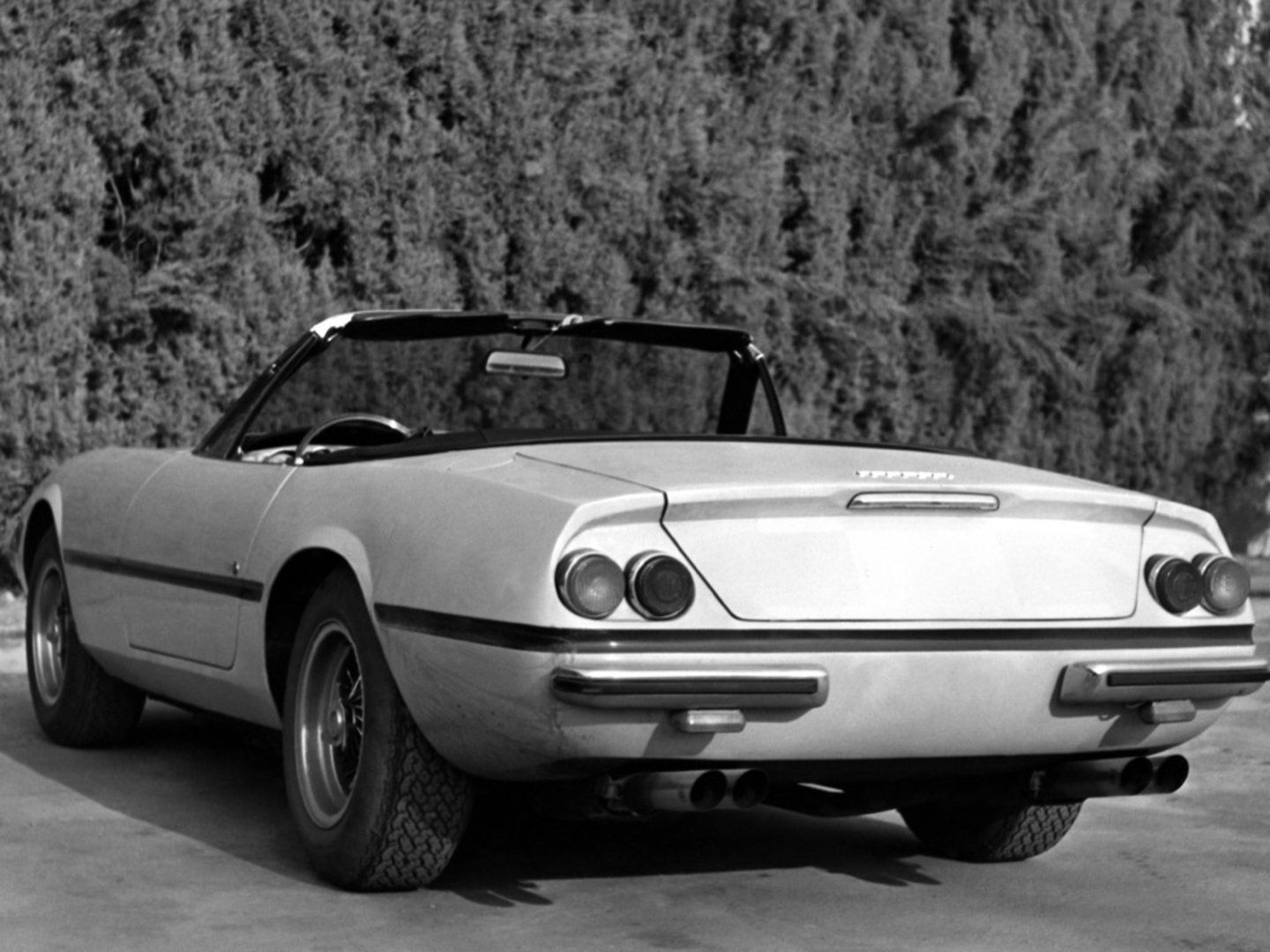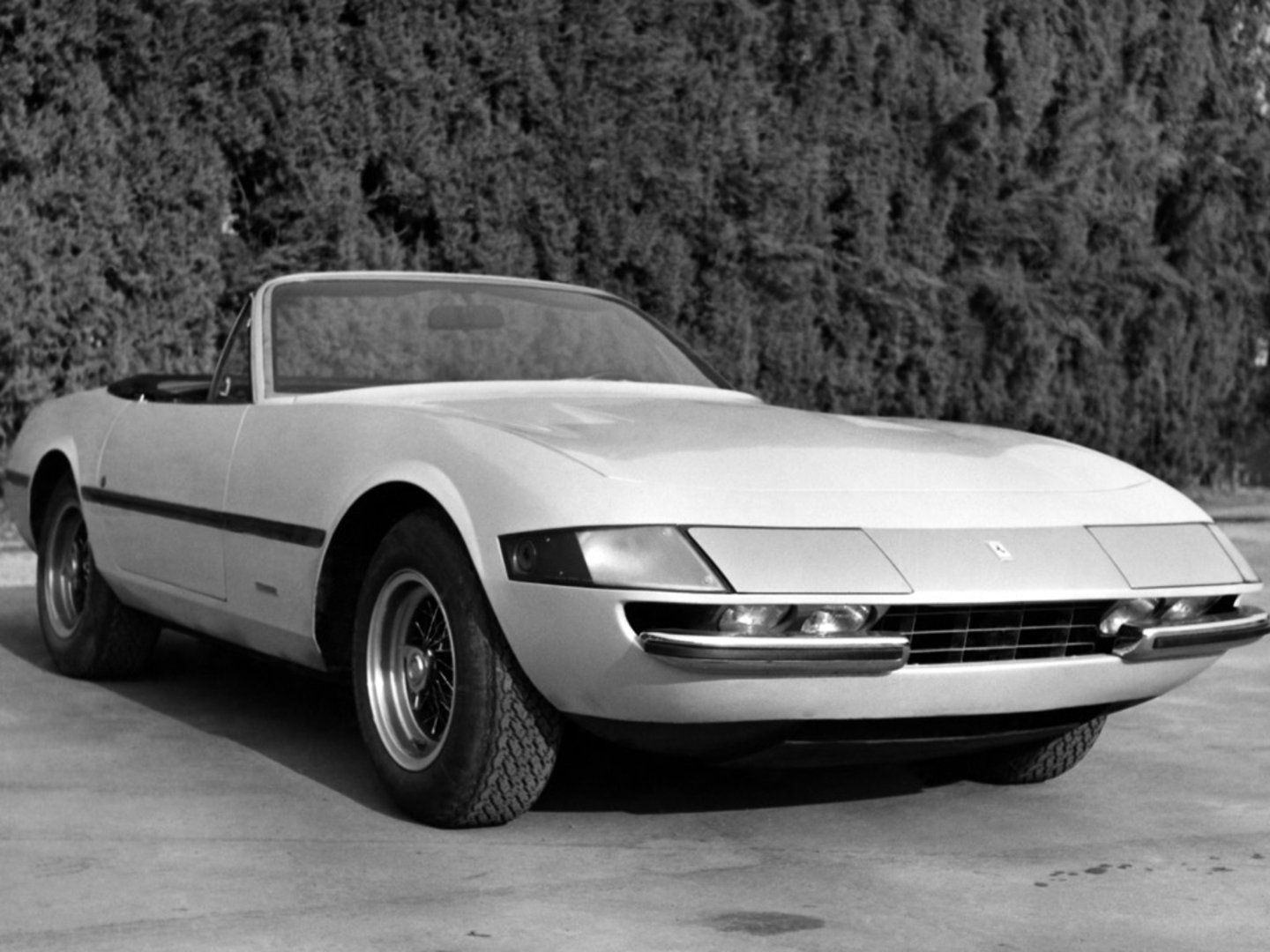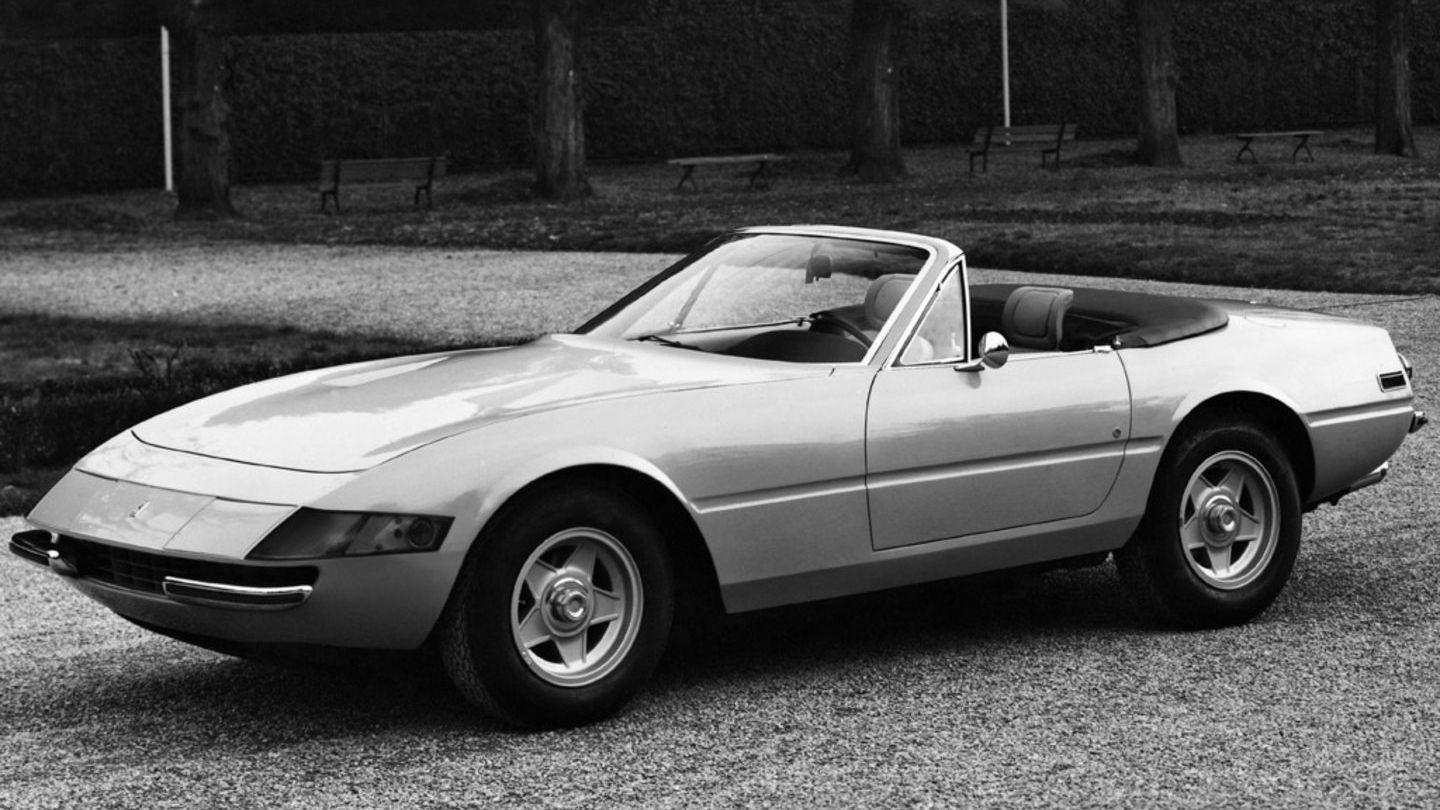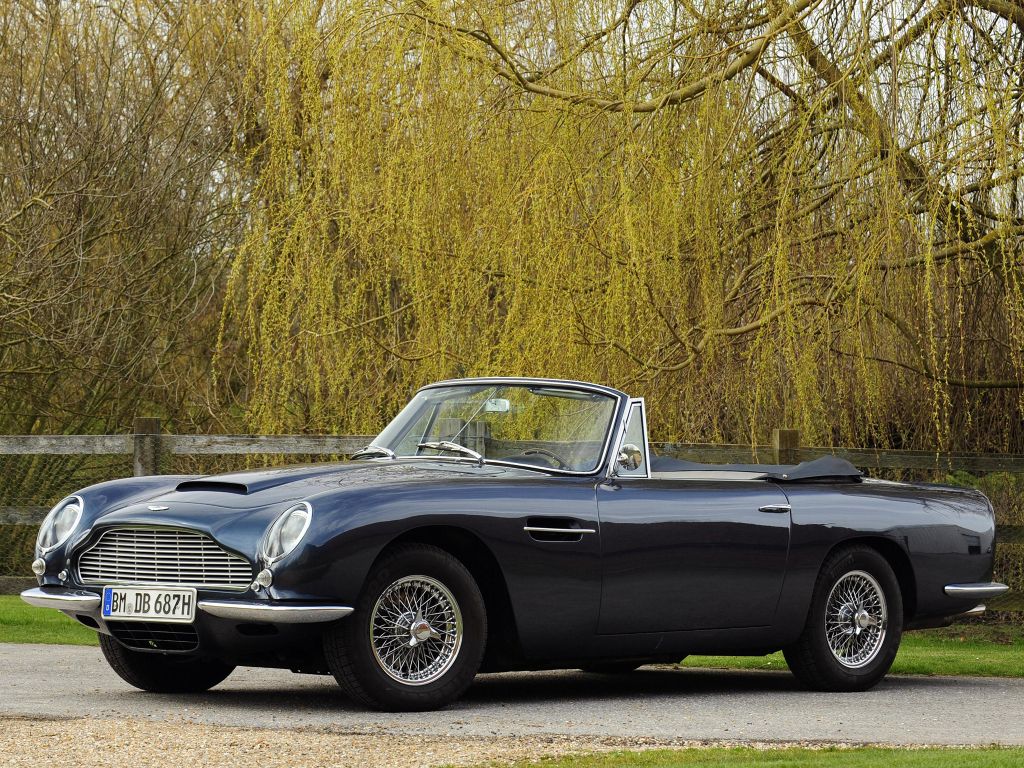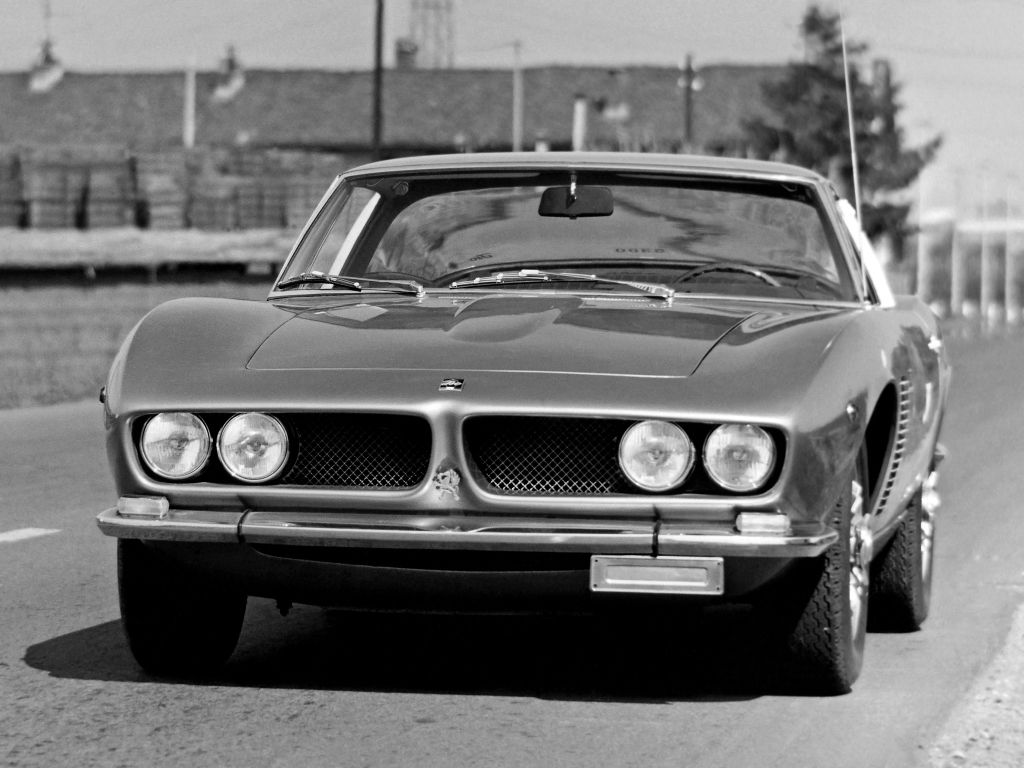There has never been a time period when Ferrari'->ke252s model naming scheme has been easy to understand, and because of that, it might not be immediately obvious just how special the vehicle you are looking at is. The problem comes from the fact that the 365 GTS is a completely different car from the 365 GTS/4 in almost all respects apart from the engine, despite the incredibly similar names. So rest assured that the car you are looking at in this article is one of the rarest, most valuable and sought after of the late-'60s Ferraris.
Thankfully, the 365 GTB/4 and 365 GTS/4 have been given the unofficial nicknames “Daytona” and Daytona Spyder” respectively. The nickname comes from Ferrari's 1-2-3 win at the 24 Hours of Daytona in 1967, and not out of a desire to make nomenclature easier, but it still helps. The Daytona was the replacement for the 275 GTB/4, and in hardtop form immediately became the fastest production car in the world. A small run of convertible->ke144 versions of the car were made toward the end of the Daytona's production life. It was the last front-engine flagship Ferrari until the 550 Maranello debuted in 1996.
Continue reading to learn more about the Ferrari 365 GTS/4.
1969 - 1973 Ferrari 365 GTS/4
- Make: Array
- Model: 1969 - 1973 Ferrari 365 GTS/4
- [do not use] Vehicle Model: Array
Exterior
The look of the Daytona is one of the biggest leaps forward in styling in all of Ferrari history. The sloping front end with its pop-up headlights made for a much more clean and modern look than even the other contemporary Ferraris. The Spyder is mechanically identical to the hardtop Daytona, with the only difference between the two being the reinforced frame of the Spyder and obviously the roof itself.
Despite the radical departure in styling, the design was by Pininfarina and construction by Scaglietti, as was the norm for Ferrari at the time. But the actual designer at the time was Leonardo Fioravanti, a young designer who had only been at the firm a short time. He would go on to design a number of of classic Ferrari cars that clearly drew their influence from the Daytona, such as the 308 GTB, the 512 Berlinetta Boxer, the 288 GTO and the F40. As such, the Daytona represents a major turning point for Ferrari styling.
Exterior Dimensions
|
Length |
4,450 MM (175.19 Inches) |
|
Width |
1,740 MM (68.50 Inches) |
|
Height |
1,250 MM (49.21 Inches) |
|
Wheelbase |
2,400 MM (94.48 Inches) |
|
Front track |
1,440 MM (56.69 Inches) |
|
Rear track |
1,453 MM (57.20 Inches) |
Interior
One upside of converting a two-seat coupe into a convertible is that you won't be asking anyone to give up the back seat, since they wouldn't have had one to begin with. As such, the interior of the Daytona Spyder isn't all that different from the interior of the hardtop. By the late '60s, Ferrari interiors were becoming roomier and better appointed than the cars of just a few years prior.
And, even though those who wanted a really luxurious interior would probably gravitate more to a 2+2 model, the Daytona didn't ask you to give up quite so much for the sake of performance. There was an ashtray and lighter, a stereo, doors with armrests, and even climate control. And of course, everything was covered in high quality leather.
Drivetrain
The 365 in the name of the car denotes the engine's displacement per cylinder, meaning that the V-12 displaced a total of 4.4 liters. This is the same displacement as all of the 365 cars, but the Daytona made slightly more power than the 320 horsepower 365 GTB. Here it made 352 horsepower, and this was enough for it to dethrone the Lamborghini Miura as the fastest production car in the world.
Not only that, but the Daytona would hold this title all of the way up until 1984, longer than any other car to have ever held the title. And it was only unseated by the Ferrari 288 GTO, a homologation special, and therefore not even a regular mass-market (such as it is in this niche) car. This is a huge achievement, and although part of the credit goes to the aerodynamic shape of the body, Ferrari's incredibly versatile Colombo V-12 deserves most of the credit.
Drivetrain Specifications
|
Type |
front, longitudinal 60° V12 |
|
Bore/stroke |
81 x 71 mm |
|
Unitary displacement |
365.86 cc |
|
Total displacement |
4390.35 cc |
|
Compression ratio |
8.8 : 1 |
|
Maximum power |
352 HP @ 7,500 RPM |
|
Power per liter |
80 hp/l |
|
Maximum torque |
317 LB-FT @ 5,500 RPM |
|
Top speed |
280 KM/H (174 MPH) |
Prices
The hardtop Daytona is not exactly a common car, with just 1,284 units produced, but it is when compared to the Spyder, with just 122 units of the drop-top having been built. Today the Spyder's rarity makes it worth so much more than the hardtop, that a number of hardtop owners have had the roofs cut off of their cars in a desperate bid to increase the car's value.
Of course, all that this actually does is decrease the value of a regular Daytona, but it is a practice that started before the internet made fakes so easy to spot, and a few people probably did get swindled. You can expect to pay at least $2.5 million for a Daytona Spyder in good condition, and it is not at all uncommon to see them go for closer to $3.5 million. Anything under $2 million probably needs some work, and one under $1 million has the very real possibility of being a fake.
Competition
Iso Grifo Targa
Technically, a Targa isn't really a convertible, but it is still an open top, and on a car that was once the fastest production car in the world. The Grifo's record comes from a few years before the Daytona's, although bigger and more powerful engines were offered for the car after it set the initial record. It might not have kept the Daytona from taking the crown, but the performance gap isn't as big as the numbers on the records would indicate. The Grifo still had all of the great exotic Italian looks, but it was powered by an American V-8, meaning that it was a lot easier for owners to have them serviced on this side of the Atlantic.
Aston Martin DB6 Volante
The DB6 was produced longer and in bigger quantities than any Aston Martin ever made before it. The Volante was the convertible version, which was nearly as powerful as the Daytona Spyder and nearly as rare. It predates the Daytona by a couple of years, and the styling is much more conservative, being a mild evolution of the classic DB5. But, for those who found the new Ferrari styling to be too much, and too modern, the DB6 offered a good alternative for these more traditional consumers. Prince Charles has one, just to give you an idea of the sort of people who bought them.
Conclusion
The Daytona was a car that was truly ahead of its time. Not only did most other sports car manufacturers in the world scramble to put out something with such modern styling, the performance was such that no other car could match it for a very long time. It was a high point for Ferrari in a decade full of high points, and it was more of a defining moment for the company than even the near-mythical 250 GTO.


